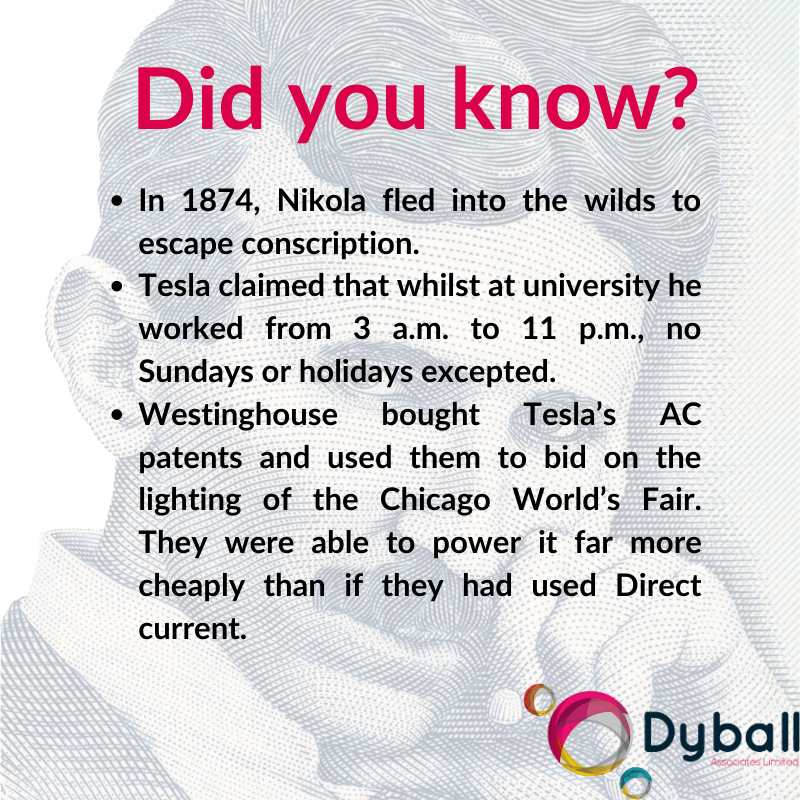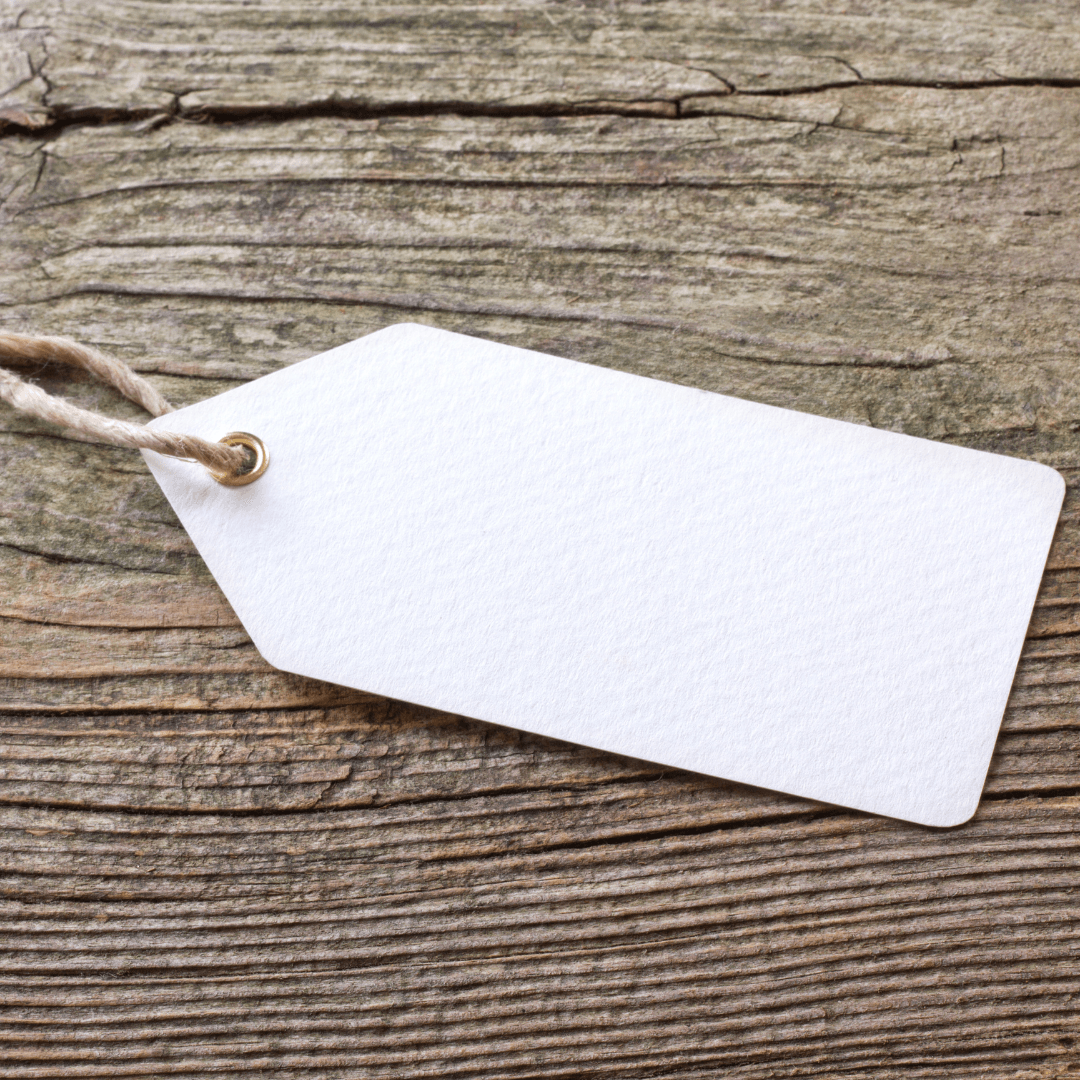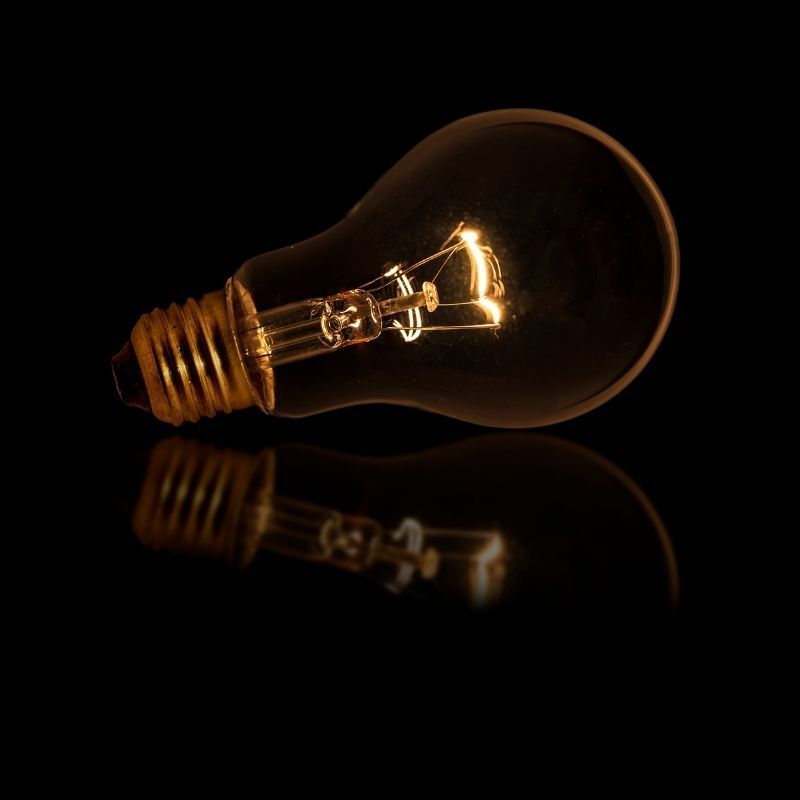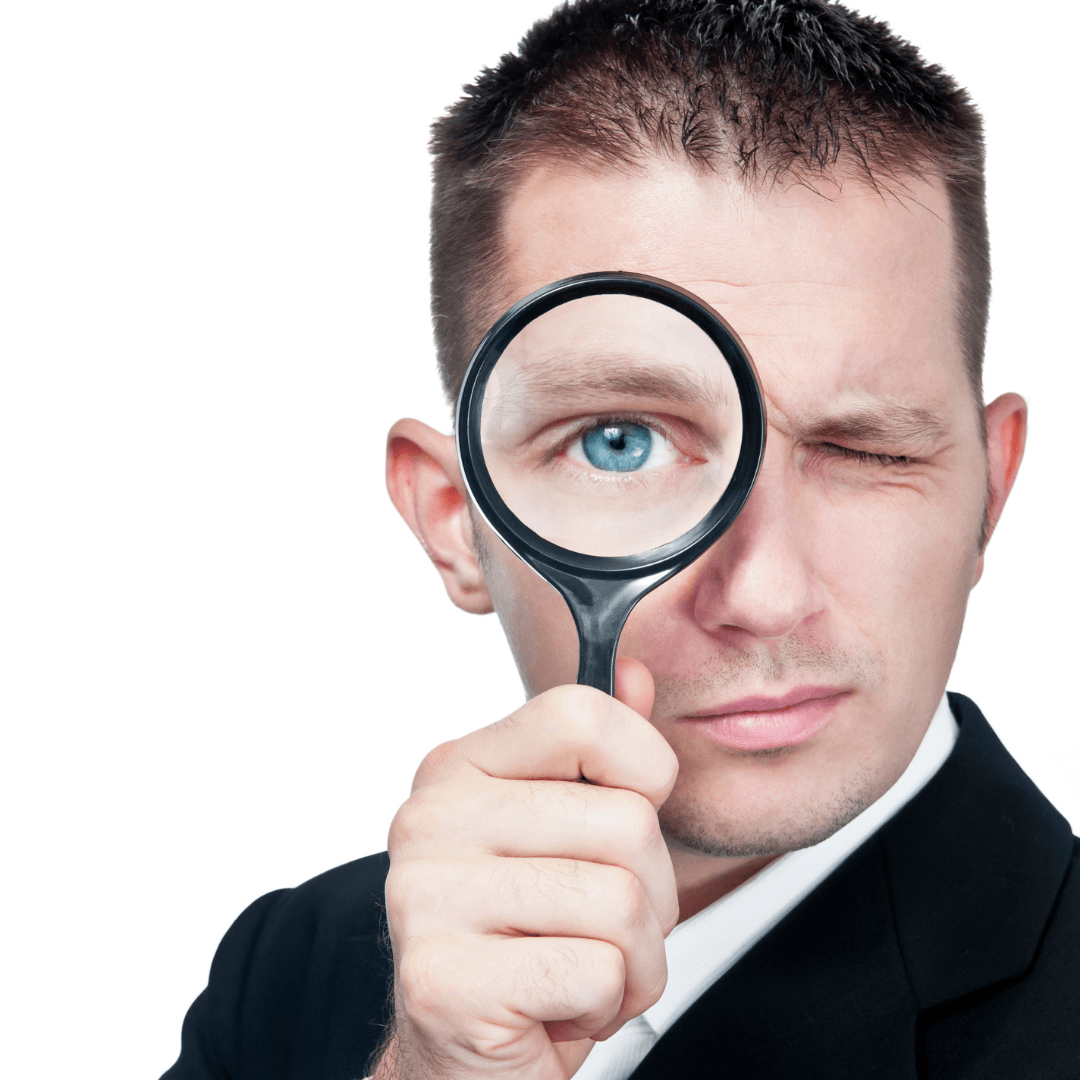Blog Post
Pioneers of Power: Nikola Tesla
Matt Olney • April 27, 2020
In part 4 of our Pioneers of Power series, we look at the man who revolutionised the way we use electricity forever and who envisioned technologies we use today well ahead of their time. Who is it? The legendary Nicola Tesla.
Early Life
Nikola Tesla was born an ethnic Serb in the small village of Smiljan, in the Austrian Empire (present day Croatia), on 10 July 1856. His father was an Eastern Orthodox priest who wanted his son to follow in his footsteps and too become a priest.
However, whilst at high school, Nikola became fascinated in electricity thanks to one of his physics teachers’ demonstrations. From then on, he wanted to become a scientist and engineer. His ability to do integral calculus in his head put him far ahead of his peers and even led some teachers to accuse him of being a cheat.
In 1873, Tesla returned to his home village, but shortly after arriving he was stricken with cholera. The disease left him bed ridden for nine months and he came close to dying numerous times. His father, who sat at his bedside made him a promise that if he were to recover, he would send Nikola to the best engineering school.
Fortunately, Nikola did recover, but a year later he went on the run, in order to avoid being conscripted into the Austro-Hungarian army. After avoiding conscription, he travelled to Austria where he enrolled at Austrian Polytechnic on a scholarship.
Whilst at university he was an avid student and in his first year he never missed a lecture, achieved the highest possible grades, and passed twice as many exams than he needed to. His second year, however, soured when he argued with one of his lecturers and was told that he ‘would die of overworking’ unless removed from the university.
Nikola never did graduate university and spiralled into a gambling addiction that almost led to him becoming financially ruined.
In 1878 Tesla severed all ties with his family due to his shame at having not finished university and he suffered a mental breakdown. Eventually he did return home after Austrian police arrested him for not having a residency permit.
In 1881, he moved to Hungary to work for a telegraph company where he was made head electrician. In 1882 he moved to France to work for the Continental Edison company where he was sent to regions where the company was having difficulties. His skills allowed him to oversee several electrical projects across Europe.
Moving to the USA
In 1884, Nikola was asked to move to the USA to assist with the electrification of New York City.
Tesla worked at the Edison Machine Works for a total of six months when he quit. What event precipitated his leaving is unclear, but it was likely down to unpaid bonuses he was promised.
Tesla stated the manager of the Edison Machine Works offered a $50,000 bonus to design "twenty-four different types of standard machines" "but it turned out to be a practical joke". Later versions of this story have Thomas Edison himself offering and then reneging on the deal, quipping "Tesla, you don't understand our American humour".
Alternating Current (AC)
Whilst working for Edison, Nikola pointed out the inefficiency of Edison’s direct current electrical powerhouses that had been built up and down the Atlantic seaboard. He believed that using an alternate current would be far more effective. He believed that Edison’s lamps were inefficient and weak when using the at the time more favoured direct current system.
At leaving Edison, Nikola created his own company called Tesla Electric Light & Manufacturing. With his own company he developed polyphase alternating current system generators, transformers, and motors. His 40 patents were sold to inventor and industrialist George Westinghouse, who was determined to use Tesla’s system to supply America’s electricity.
What is AC?
Alternating Current is Tesla’s crowning achievement. While not the inventor of AC power he made it easy to use widespread.
AC power allows for electricity to be sent over long distances much more efficiently.
Numerous achievements
Naturally, Edison was keen to keep hold of his empire built on direct current and a bitter war ensued between AC and DC. AC naturally emerged the victor due to it being the better technology.
Whilst working for Westinghouse, Tesla created numerous inventions. When it came to decide what company would build a power generator at Niagara Falls, Thomas Edison was the first choice.
After reviewing Tesla’s work for Westinghouse Electric, though, the Niagara Falls commission went with Tesla’s alternating current power. Despite doubts, Tesla’s system worked and is now the standard for hydroelectric power.
Some of his other inventions include:
• The Tesla coil -A tower (of any height) that uses coils to shoot lightning out into the air. You can often see them at science museums.
• The Magnifying Transmitter – Tesla was obsessed with creating a way to make wireless transmitted power. He was so far ahead of his time that the idea was only properly realised in the 2010s.
• Tesla Turbine – Tesla also created a piston engine for use in the car industry. His turbine style engine that used combustion to make disks rotate. The fuel efficiency of his engine was 60%, a big achievement seeing as many the engines used in cars today fuel efficiency level is about 42%.
• The Induction motor – Teslas patents for an induction motor use electromagnets to spin. It is commonly used in vacuums, blow dryers, and power tools, even today.
Later Years
To list all of Tesla’s achievements would see this blog run into several thousand words, but Nicola Tesla is the very definition of a Pioneer of Power.
In his older years Tesla received numerous accolades from nations across the world and there are rumours that both he and Thomas Edison had been intended to win a Nobel Prize in 1915. Auto biographers believe that both men were not given the award due to their mutual loathing of one another.
On 7 January 1943, at the age of 86, Tesla died alone in Room 3327 of the New Yorker Hotel. On 12 January,
two thousand people attended a state funeral for Tesla at the Cathedral of St. John the Divine in Manhattan.
Tesla’s work fell into obscurity following his death, but interest was revived in the 1960s and his name lives on today in the form of Elon Musk’s electric vehicle company Tesla.
Further Reading
Pioneers of Power – Michael Faraday
Dyball Associates are proud to help new supply businesses successfully launch in the UK market.
Through our energy market consultancy services, and the software we’ve developed, we’re supporting new UK electricity and gas suppliers get set up and start supplying.
For more information on how to start and manage an energy company, get in touch
with Dyball Associates today.
